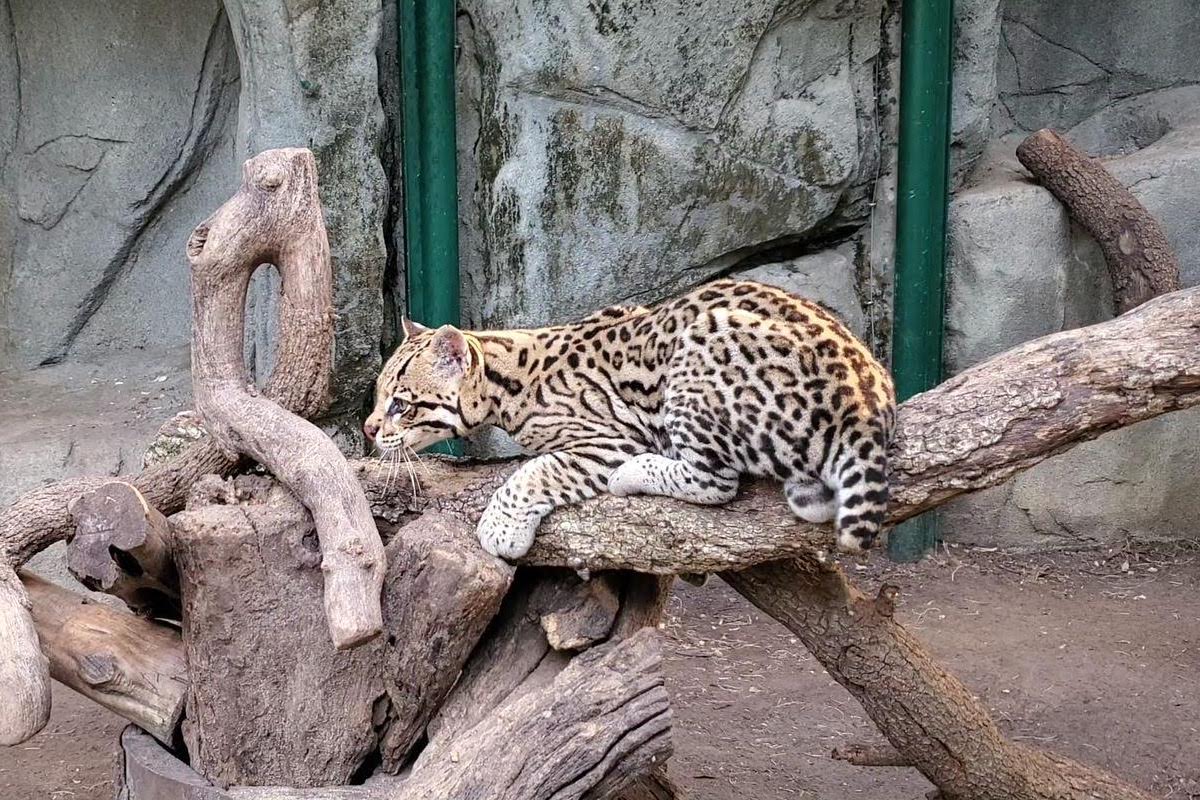Today, if you want to see an ocelot for yourself, your best bet is a zoo. The Houston Zoo has four of the wild cats with big eyes and golden fur coats decorated with black spots and bands.
Chief Curator Kevin Hodge says Jack and Genevive – the two ocelots on display at the zoo – have thrived under their caretaker’s controlled environment. Last year, the pair became parents to ocelot kittens.
Yet out in the wild, the once thriving ocelot population in the United States has dwindled down to less than 100. All are in deep South Texas. Hodge says ocelots have struggled to adapt to a changing environment.
“Over the past 100 years their range has greatly decreased,” Hodge said. “Ocelots are not quite as adaptable as bobcats or even cougars. They need lots of cover, uninterrupted land with a thick canopy cover is what will do best for them.”
Finding that needed cover in Texas, however, has become increasingly difficult, as expanding human development and the accompanying traffic have continued to shrink the cat’s habitat.
RELATED: An energy facility near Brownsville could block the path for Texas ocelots
Dr. Michael E. Tewes, who researches wild cats at Texas A&M’s Caesar Kleberg Wildlife Research Institute, says that in addition to habitat loss, ocelots have long been overexploited.
The cats were once trapped and traded as pets and were also heavily hunted for their distinctive fur coats. This combination of challenges have made ocelots particularly vulnerable.
“They have undergone a very severe loss of genetic diversity, and that’s important for the survival of a population and of a species. So this loss of genetic diversity precludes them from the ability to adapt to changing future environments,” Tewes said.

Genevive at the Houston Zoo.
Recovering the ocelot
Nevertheless, there may be hope for the cat’s future. That’s because of an ambitious new public-private partnership working to reintroduce ocelots into their historic Texas habitat.
Neal Wilkins, the President and CEO of the East Foundation describes the project as a “bit of a moonshot.”
Together with six other partners including the Texas Parks and Wildlife Department and the U.S. Fish and Wildlife Service, Wilkins and his colleagues are developing strategies to recover the Texas ocelots.
To do this, researchers need to expand the genetic diversity of the current wild ocelot population, and they need to find a suitable habitat for the ocelots that is not vulnerable to either severe weather events on the coast or human development.
According to Wilkins, the group is exploring the possibility of acquiring ocelots from Mexico – where the species is not endangered – to assist with the Texas recovery efforts. But if that doesn’t work, they have another plan.
“We can’t control international diplomacy,” Wilkins said, “But we can get semen out of male ocelots and we can artificially inseminate female ocelots that are carefully selected out of the zoo population.”
The idea is to use assisted reproduction technologies with ocelots that are a part of zoo populations, such as Jack and Genevieve, to produce new baby ocelots.
RELATED: Scientists are trying to save Texas ocelots. So they sent testicles to Ohio
It’s not exactly a new idea. At the Houston Zoo – and other zoos across the country – caretakers use assisted reproductive technologies to help conserve species within zoo populations. However, the technique has never been used to attempt to establish a new wild ocelot population.
“If we’re successful, we’ll have a new ocelot population somewhere else in Texas that’s not threatened by the same risks as the current ocelot population,” Wilkins said.

A long and uncertain process
However, Wilkins is quick to point out that the effort to recover Texas ocelots is still in the early, exploratory phase.
In order for ocelots to be considered recovered in the United States, the population must reach 200 and be sustained at that level for ten years. The recovery effort – if it works – will be a long and slow process.
Yet for Wilkins and his colleagues, the undertaking is worthwhile and important.
“As private land stewards in Texas, there’s a little bit of a source of pride to say, well, are we willing to let our population in the United States go extinct? That just doesn’t seem like good land stewardship,” Wilkins said.
Back at the Houston Zoo, curator Kevin Hodges agreed that the conservation of this iconic species is well worth the effort.
“I’ve never seen [an ocelot] isolated in the wild,” Hodges said. “I hope to one day. I would love to.”
If the effort to reintroduce ocelots is successful. That wish may one day be granted.







